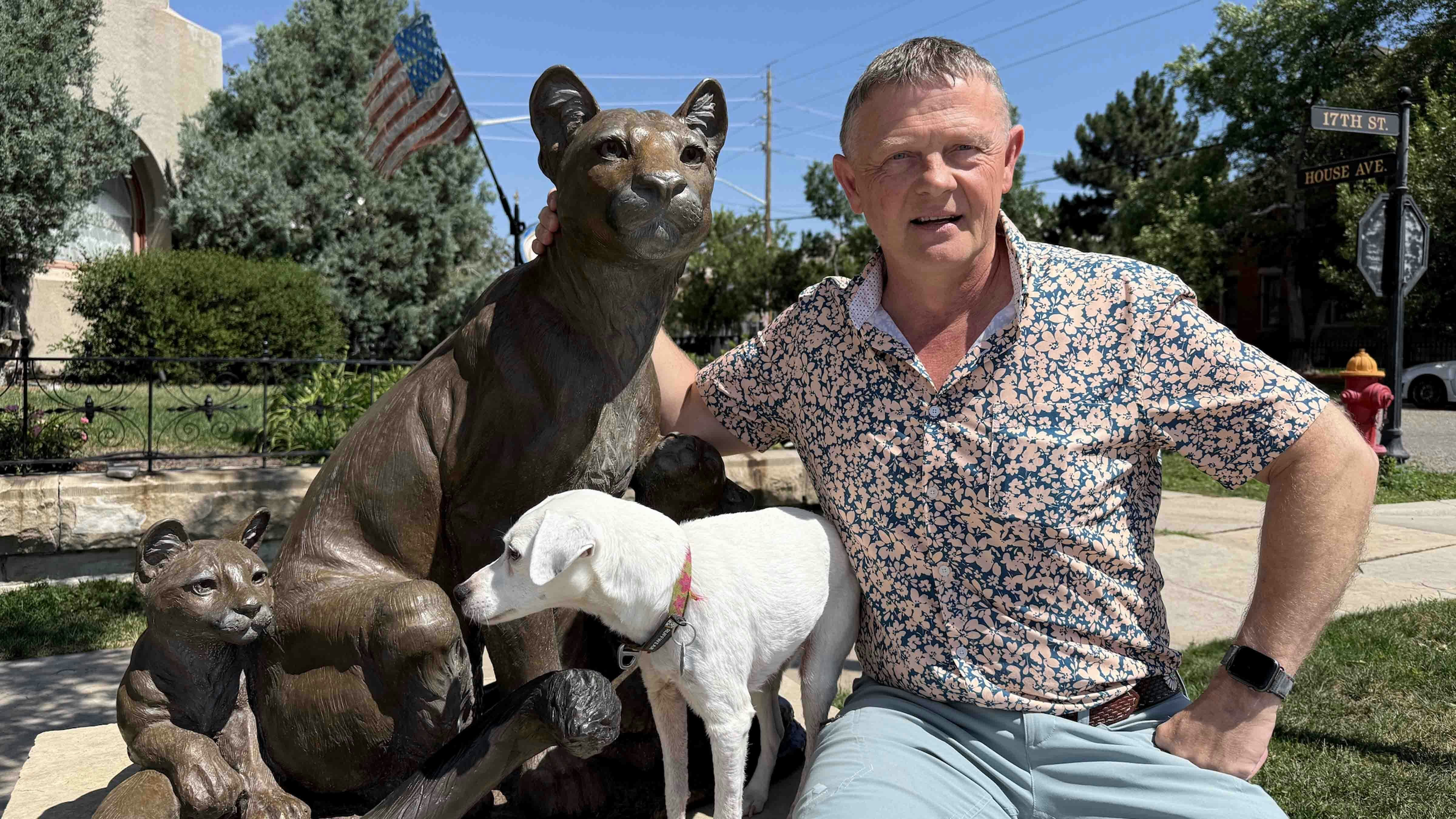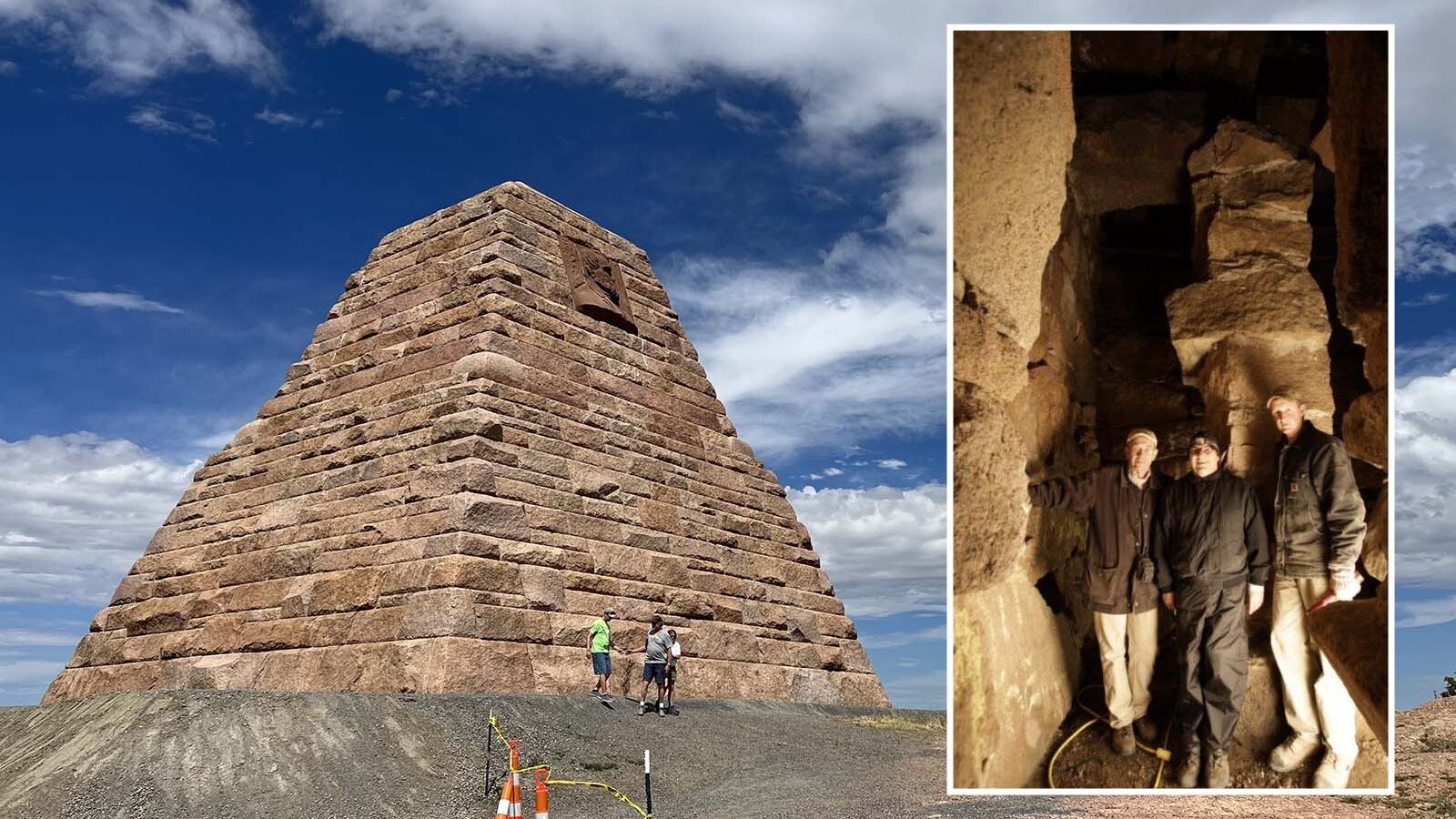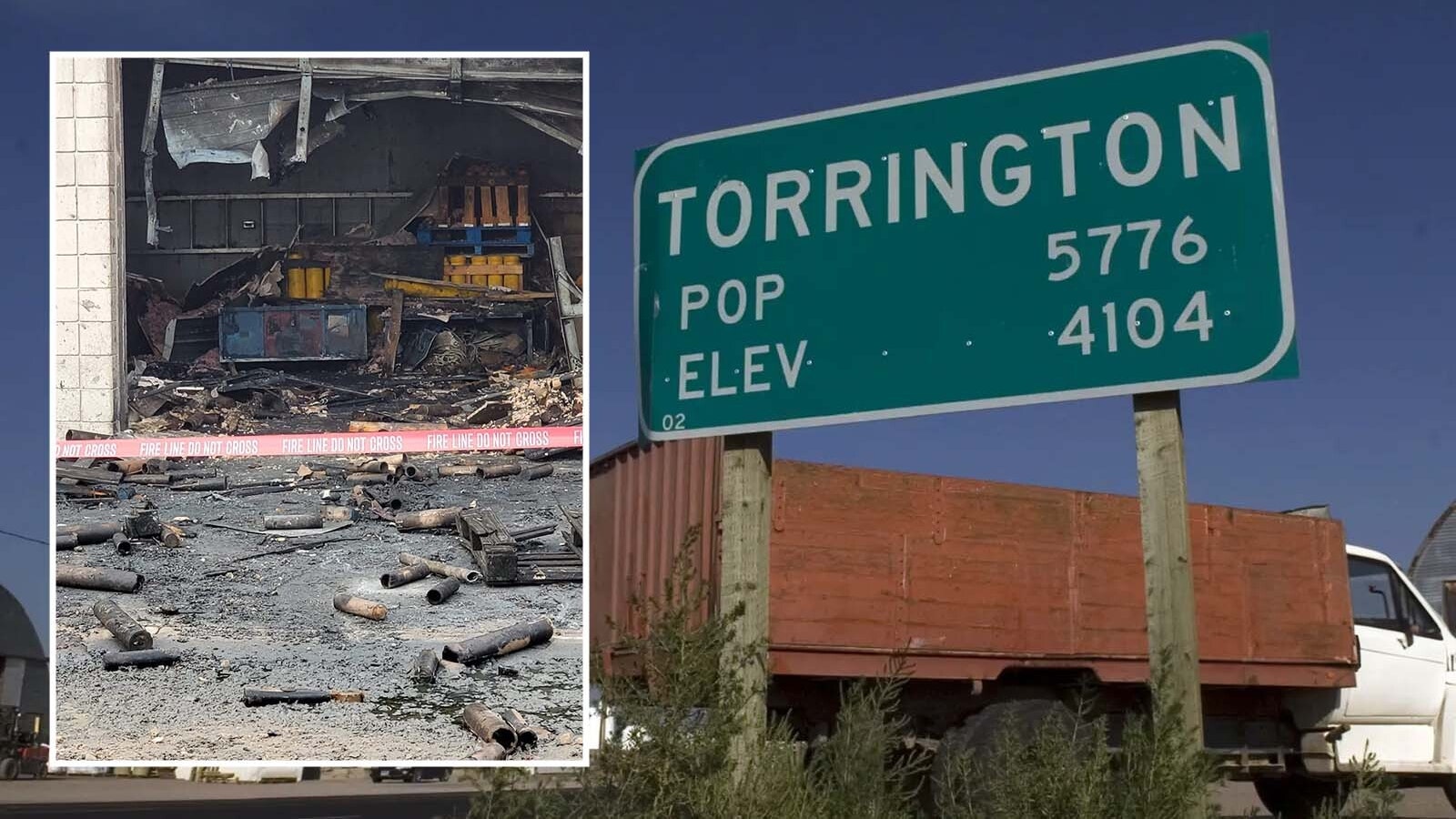The way to improve hand-squeezed lemonade and homemade ice cream is to add a side order of history, and that is what was served at the Grand Encampment Museum last weekend.
This year the museum’s living history program coincided with National Day of the American Cowboy, and Mark Dunning, the manager of the Big Creek Ranch and president of the Grand Encampment Museum Board, helped youngsters make ropes as he talked with them and their adults about the gear of the cowboy.
He was one of a host of volunteers, many of them in historic dress, who take their places in the 18 historic buildings and structures at the museum allowing visitors to learn about the museum “town.”
Known as the “GEM of Southern Wyoming,” the museum’s structures include a tie hack cabin, one-room schoolhouse, stage station, several businesses, a livery filled with wagons and other vehicles, and even a two-story outhouse.
You’ll know you are at the museum when you see the three replica towers of the 16-mile-long aerial tramway that was used to transport copper ore from the region’s largest mine to the Grand Encampment Copper Co. Smelter in the early 1900s.
Living history day is an immersive experience for visitors. The sounds of violin music wafted across the museum grounds because Anita Morris, the secretary of the GEM board, spent much of the day playing her violin.
In the Peryam homestead house, which was moved to the museum from its original location at the old town of Swan, where it was one of the first homesteads in the area, descendant Allan Peryam shared stories of his family.

In the saloon, a retired preacher, schoolteacher and deputy sheriff played poker, and a dance-hall gal with the voice of an angel entertained.
Wearing my own blue dress, I welcomed visitors to the Parkison House, built in 1908 by a construction crew that included my great-grandfather, Joseph Fisher.
Ellen and Ed Hoyt Parkison came to Grand Encampment in the earliest years of the local copper boom that started in 1897. They had operated a mercantile business in Cripple Creek, Colorado, and came to Encampment to start a new store. They would operate in three locations during a nearly 80-year run, providing supplies to miners and timber workers initially, but later catering to the ranching community.
GEM Board members Karen Dibbern and Kathy Moon made the lemonade while the board’s former treasurer, Irene Archibald, and Museum Education Director Cathy Lynch served ice cream that had been hand-churned over a week’s time to have enough for all visitors.
With his badge on his shirt and partially hidden by his leather vest, Museum Director Tim Nicklas roamed the grounds. There were other volunteers spinning yarn, quilting and welcoming visitors to the Doc Culleton Interpretive Center.
The first Euro-Americans known to visit the area where Encampment now sits came in the early 1800s with the fur trade.
Ezekiel Williams most likely was the first, traveling through the valley following the North Platte River in 1811. Other fur trappers would follow him, and in 1838 after the big mountain rendezvous at the Popo Agie, which is recreated every year in Riverton, some of the mountain trappers made their way south and had a smaller gathering beside what is now the Encampment River — probably not far from the location where the town of Swan stood.
They called it Camp le Grande. This name would stick when the copper boom of 1897 spawned a town, Grand Encampment.

Fur trappers like Jim Bridger, who was often in the region around Encampment and Carbon County (a pass south of Rawlins is named for him), joined with partner Louis Vasquez and built a fur trade post in western Wyoming in 1842. He knew it would be in the path of the emigrants.
Trapper Jim Baker built himself a cabin on the west side of the Sierra Madre. That building was later moved to Cheyenne, but has since been returned to the Little Snake River Valley and is a part of the Little Snake River Museum in Dixon.
The era of the fur trade still attracts men, women and children to modern day rendezvous. The Sierra Madre Muzzleloaders hold an annual rendezvous in junction with the Grand Encampment Museum Living History. Some of the folks who attend have been participating for decades. They put up tipis, tents, even just rough shelters, spread their trade blankets and share the culture of the mountain men.
Eric Russell of Encampment is one longtime participant. This year he had four black bear pelts hanging from the poles of his shelter and he would take them down to drape them around the shoulders of young children who came to his trade blanket. Then, in the spirit of rendezvous, the trading would begin.
Two young girls, Oakley Bunch, 10, and Alex Bunch, 5, of Saratoga had never been to rendezvous before, but their grandparents, Liz and John Keaveny were longtime participants at the Sierra Madre gathering. This year the girls were dressed in buckskin clothing made by their grandparents. They had come with some money and quickly traded for such items as a beaded necklace, candles, soap and a rabbit pelt.
With a bear skin around her, Oakley and Alex began a trading session with Eric Russell. Soon Oakley had a pair of moccasins and Alex gave up her candles, a bar of soap and other foofaraw for a skunk pelt that Eric told her he’d tanned after he found it as roadkill on the highway.
The young girl seemed more interested in the empty holes where the skunk’s eyes once had been than the fact that this once was a stinky, smelly critter.
For Medicine Bow trading company trader Kevin Hill of Wheatland, the Sierra Madre Muzzleloader Rendezvous is one of the best in the region.
“I love the attention they pay to the kids,” Hill said. “It’s all about the kids, and it’s not the big party rendezvous that you see everywhere else. They pay more attention to the kids. It’s just the best I’ve ever seen. The county really supports it.”

At the Sierra Madre Rendezvous, kids not only learn how to trade like a mountain man, but they can take part in tomahawk throwing, dig in a sawdust pile for plunder and even take part in black powder shooting. If they get too hot, they can wade and play in the irrigation ditch that runs through the museum and rendezvous grounds.
Without doubt the best view of the doings at the Grand Encampment Museum and Sierra Madre Muzzleloader Rendezvous is from the top of the Slash Ridge Fire Tower, an 80-foot-high metal tower that once stood in the Snowy Range mountains.
As I sat near the front door of the Parkison House, I could hear the families climbing the stairs to the tower; every step caused the metal structure to pop and snap. One little girl did not like that at all and told her mom she did not want to go to the top. But mom urged her on, and once at the top, they encountered a museum volunteer who began to regale them with stories of how fire spotters once lived and worked at such towers throughout the mountains.
Even from my perch down below, I could hear the little girl begin to ask questions. She was literally surrounded by history.
Prospector Ed Haggarty (who spent some time also herding sheep), found the copper that became the mining district’s signature mine. It was first known as the Rudefeha, named for the men who staked him to supplies — George Rumsey, Robert Deal, George Ferris and Haggarty himself — and later became the Ferris-Haggarty.
Dozens upon dozens of other mines were quickly developed and mining prospectors as well as town boomers flocked to the region from Cripple Creek. The Grand Encampment Mining District was quickly recognized as the “next” big boom area.
The mines were developed from 1898 to 1908. But then the price of copper fell, it became clear that the speculators and over-speculated, there were fires that damaged the smelter and it was not economical to rebuild. The town withered from around 3,000 residents to just about 300. It hung on thanks to the timber operations, first tie cutting and later lumber milling, and ranching.
Grand Encampment unlike most of the other towns the copper boom spawned such as Battle, Copperton, Dillon and Elwood, which became ghosts, survived as a smaller place. Today there are around 400 town residents and a large ranching population.
The idea for a museum was hatched in the middle of the town’s main street by longtime residents Vera Oldman and her friend Hila Parkison in 1964. They were determined women, and today’s GEM complex is a testament to their tenacity.
This museum, like so many others in small towns across Wyoming, is for the most part built and managed by volunteers, with just enough paid staff to keep the doors open. Funding comes from grants and donations; there is no general admission charge.
This year Brush Creek Ranch is holding an “Embrace the Valley” fund drive for Upper North Platte Valley charitable organizations, including the Grand Encampment Museum. Any donation made prior to Aug. 13 will be doubled by the White Family Foundation (up to $50,000). Donation checks made out to the Grand Encampment Museum should be sent to: Jan Grabow, Special Events Liaison, P.O. Box 752, Saratoga, WY 82331. The subject line should say “Embrace the Valley.”





